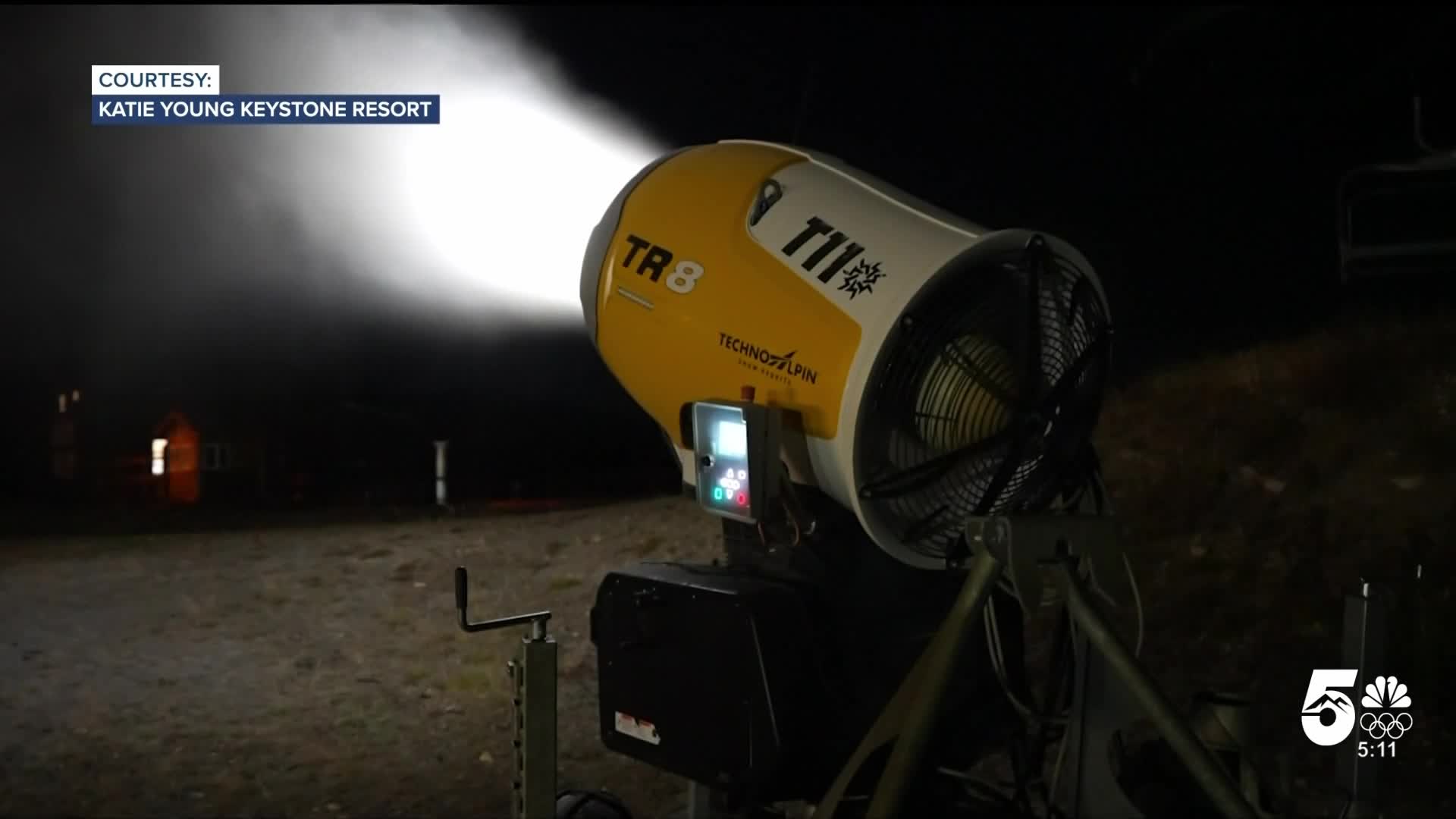In La Nina winters, nature doesn't always provide natural snow to help ski areas open. Across the U.S. and around the world, resorts often use machines to build base depths when nature can't provide it itself.
But this snow behaves differently than natural snow. Expert skiers and boarders can tell the difference. Even if you can't, the science is interesting and the implications are important if you do ride.
The snow they make has some benefits and drawbacks compared to the stuff that falls from the sky.
There are two types of snow guns, machines that make snow. They operate differently but both types take water, turn it into tiny droplets, add some particles to freeze onto, and add a powerful stream of fast-moving air to propel them into the air.
They differ in whether that air is generated through compressed injection, or a giant fan.
For this process to work, the air needs to be dry and cold. This is measured using the wet bulb temperature.
The wet bulb measures how much the air can cool due to evaporation. It's part of how you cool down on a hot day as sweat evaporates from your skin. Dry air has a colder wet bulb temperature because we can evaporate more water into it. Ideal snowmaking conditions require a wet-bulb temperature under 20 degrees.
So what's ideal? In a word — fluffiness. This is also the main difference between natural snow and machine-made snow.
Colorado is world renowned for its dry powder snow. This snow can be up to 90% air - and in some cases, closer to 95% in particularly cold storms. The best snow making machines can only produce snow with 70% air and 30% water. The colder the wet bulb, the closer ski resorts can get to that 70% number.
Artificial snow doesn't form flakes. It forms semi-spherical balls instead. Flakes take time to grow and form from water vapor — not water droplets. Machines don't provide enough time for that process to happen.
One result of the more spherical and higher water content snow is that it combines into an icier, smoother surface than natural snow does. You're more likely to notice the difference on warmer days when the temperatures are closer to or above freezing. Machine-made snow surfaces are harder, so when you turn, your skis bite less into the snow and you move faster.
However, snow grooming techniques do a lot to blend out the differences you'd otherwise notice. Snow groomers use tillers to break up the snow pellets. This compacts the snow and smooths it out, making artificial and natural snow feel more similar.
Another benefit of the round snow is its durability. It tends to be more resistant to breakdown and makes a good base which natural snow can then accumulate on through the season.
So — if you're skiing in the next few weeks, and your ride seems faster than usual, now you know why!
____
Have a question or story idea you would like the First Alert 5 Weather team to consider? Email: weather@koaa.com
Watch KOAA News5 on your time, anytime with our free streaming app available for your Roku, FireTV, AppleTV and Android TV. Just search KOAA News5, download and start watching.




